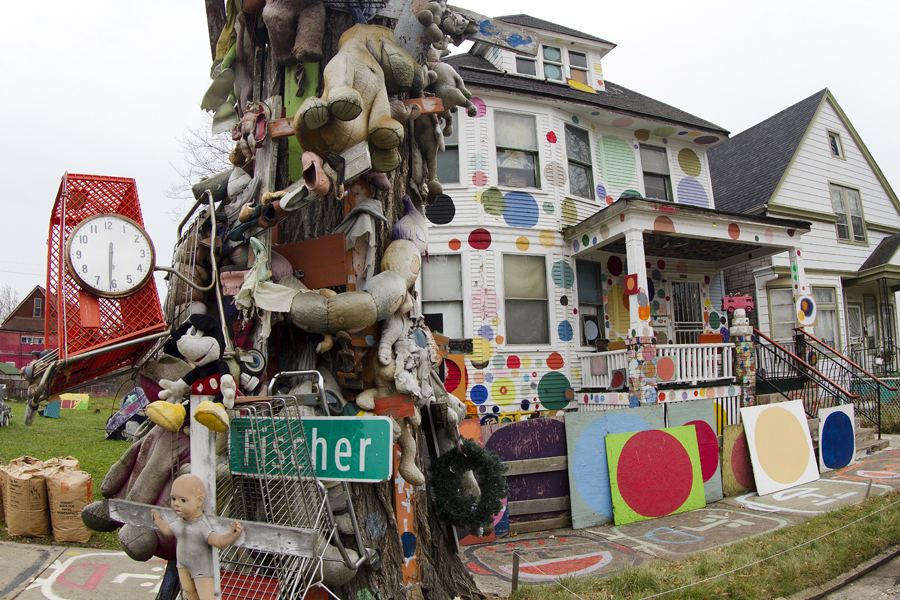

Note: This story has been updated on Aug. 14, 2016, when Artist Tyree Guyton announced he will dismantle the Heidelberg Project over the next two years and head in a different direction with more collaborators.
Artist Tyree Guyton, who grew up in a poor family with nine siblings on Detroit’s east side, was elated when Oprah Winfrey invited him to talk about the Heidelberg Project on her show in 1991.
What he didn’t know was that Oprah was not a fan of decorating abandoned houses with polka dots and discarded objects, and she called his artwork a nuisance on national TV. Two months later, then-Mayor Coleman A. Young sent in the bulldozers, demolishing installations and four Heidelberg Project homes, including the “Babydoll House,” which was adorned with dismembered, naked and sometimes burned dolls. Inside the home, which represented missing and abused children, was all of Guyton’s paintings and sculptures.
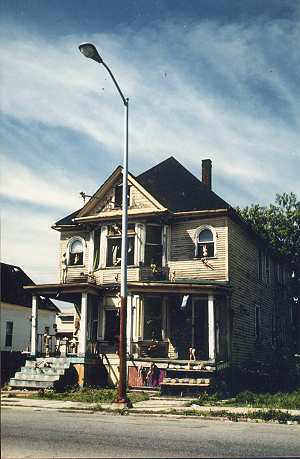
Guyton, now 60, was raised on Heidelberg Street, relying on secondhand clothes and shoes because his family was poor. He watched his stable neighborhood deteriorate into blight, violence, prostitution and abandonment. When he was 8, his grandfather, Sam Mackey, who was a housepainter, gave Tyree a paintbrush.
“I felt as if I was holding a magic wand,” Guyton told People in 1988.
But before Guyton could work his magic, he served two years in the Army and returned home to an auto job and a stint as a Detroit firefighter. In 1986, when Guyton was 32, he decided he’d had enough with crime and blight and began decorating crack houses, trees and empty lots with toys, hubcaps, shoes, tires, vacuum cleaners, mannequins, old bikes and TVs.
With his former wife Karen Guyton and 90-year-old Grandpa Sam, Tyree began hanging discarded objects on abandoned houses. Grandpa Sam often painted polka dots because they resembled one of his favorite snacks – jelly beans. For Guyton, the diversity of jelly beans represented racial harmony and became a common theme of the Heidelberg.
Guyton also began to hang shoes from trees and houses after his grandfather recounted stories about lynchings in the south when “all that could be seen were the soles of shoes” of the victim, according to “Imagery of Lynchings” by Dora Apel.
Grandpa Sam was later buried in a casket covered with polka dots. Guyton’s mother, Betty Guyton, now lives in a house covered in polka dots in the heart of the Heidelberg Project.
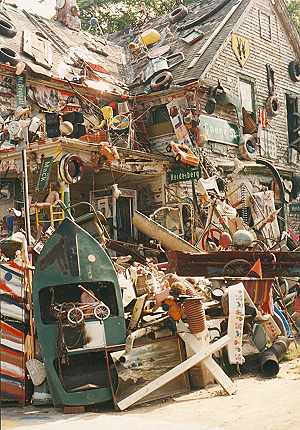
One of the first homes the trio worked on together was the “Fun House,” which cascaded with so much colorful “junk” that it drew criticism for contributing to the blight. The trio even painted the street.
Empty lots quickly began to fill up with car hoods, upright vacuum cleaners and washing machines.
In just a few years, people outside of the neighborhood began to take notice. Media depictions of the urban art began to attract an international audience. Reactions among artists were mixed.
In 1990, Guyton was featured in a documentary, “The Voodoo Man of Heidelberg Street,” and the trio was showcased at the Detroit Institute for the Arts.
“This is my art,” Guyton told Newsweek in the early 1990s, “Most of the things used are things that I didn’t have coming up. We didn’t have a phone, we didn’t have toys to play with. So a lot of the stuff that I relate to is stuff that has played a part in my life – stuff that I didn’t have, stuff that I wanted.”
Not everyone in the neighborhood supported the project. In the year leading up to the Oprah show, some neighbors complained about accumulating piles of junk in areas that still had potential to grow.
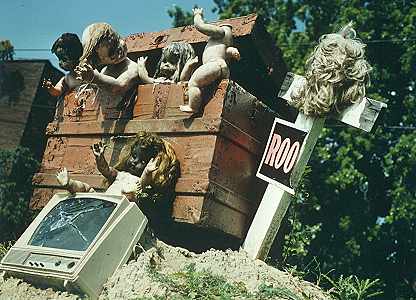
“The houses were ripe for rehab,” one neighbor, Anthony, told me, saying the properties were never “wretched masses” as depicted by Guyton.
At the time, a district councilman fumed about Guyton to People magazine.
“It’s some psychedelic trip he’s on,” District Councilman Conrad Herndon said. “He needs to be confined. This is hurting the neighborhood, not helping it.”
On Nov. 21, 1991, bulldozers and police cars arrived. A helicopter circled above. Installations and four art-festooned houses were demolished and hauled off to the dump. All of Guyton’s paintings and sculptures were inside one of the houses.
Mayor Young said the installations were an eyesore.
The next year, Guyton’s grief grew heavier when his best friend and grandfather, Grandpa Sam, died at the age of 94.
In 1993, Guyton’s brother died from complications of AIDS. A year later, Guyton’s nephew was fatally shot. Then Tyree and his wife of nine years divorced. He found himself homeless and struggling to make ends meet.
Clutching a .25 automatic, Guyton thought about ending the pain.
“People are coming from all over the world to see what I do,” he told the Los Angeles Times in 1995. “They tell me my work gives them hope, gives them something to think about, gives them a reason to come to the city of Detroit. It makes them happy, and here I am in pain. … Isn’t that something?”
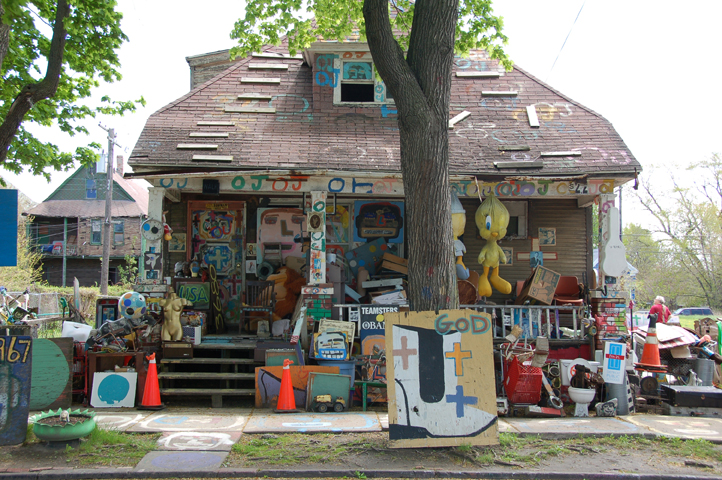
Through it all, Guyton kept working to rebuild the Heidelberg. During the Simpson trial in 1995, Guyton began working on his first post-demolition installation, the “O.J. House,” which also stood for obstruction of justice. Guyton was troubled by the media hype surrounding the trial and wanted more attention paid to serious issues like poverty and racism.

Amidst all of the personal turmoil, a happenstance encounter would change Guyton’s life. A young banker named Jenenne Whitfield took a wrong turn while driving on the east side and discovered the colorful art installations of the Heidelberg Project.
“It transformed my life,” Whitfield told me in 2014. “The work was so compelling. I gave up everything I had to help him build a foundation under his vision.”
They married in October 2001.
As Guyton added more homes and installations to the Heidelberg Project, his work continued to draw criticism, especially among neighbors who blamed him for glorifying blight and attracting rodents.

In 1998, the city council ordered crews to demolish any part of the Heidelberg Project that was on city property, which was most of it. City Councilwoman Kay Everett called the artwork “glorified garbage” and offered to personally bulldoze the project.
But protesters successfully blocked demolition on the first day, and then a judge issued a restraining order.
In February and April 1999, then-Mayor Dennis Archer demanded the demolition of the project despite the judge’s order. Three more houses were leveled.
“These people who live there did not choose to live in the middle of the Heidelberg Project,” Mayor Dennis Archer’s assistant Angela Wilson said. “It’s just the opposite – the Heidelberg Project chose to impose itself on them. That’s the issue.”
Incensed that the city would choose to demolish the Heidelberg houses over tens of thousand of other abandoned homes, Guyton pledged revenge.
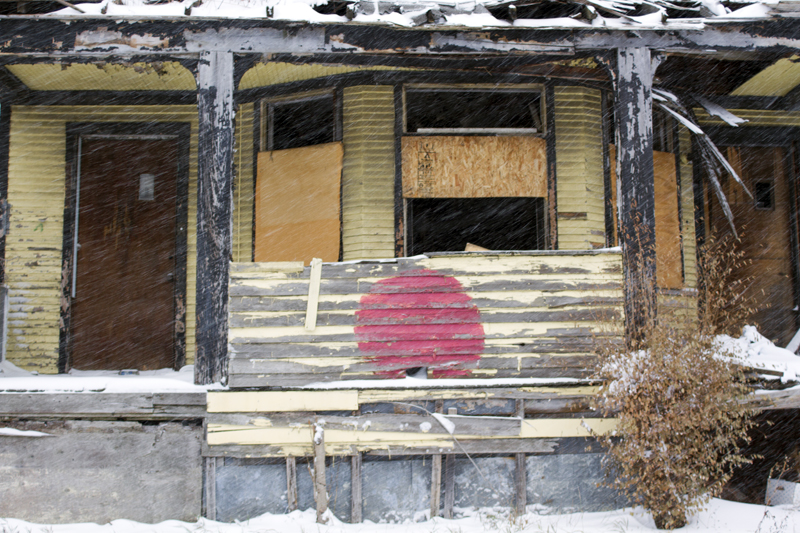
“My next project is the whole city,” Guyton told the Detroit News. “I’m going to polka-dot the city.”
Sure enough, polka dots began appearing more frequently than before on doors of abandoned houses and buildings across the city, though mostly on the east side.
As soon as the city crews left, Guyton began rebuilding. One of his newest additions was a 1955 bus that he painted with polka dots and called the “Rosa Parks Bus.”
But in June 2001, thieves stole the bus, prompting an FBI investigation. It was later found on the west side at Grand River and I-96. Left inside were 25 car hoods that Guyton had painted. They were selling for between $5,000 and $8,000 at Detroit art galleries.
In 2003, the Heidelberg Project found a friend in new Mayor Kwame Kilpatrick. The city even hired Guyton to paint a garbage truck for a parade float in November 2003.
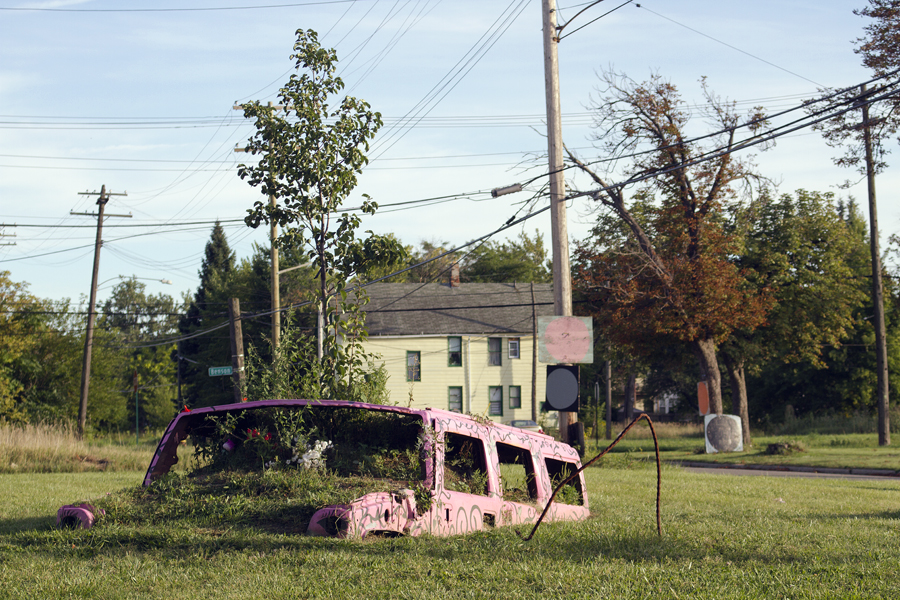 Without city intervention, Guyton and his nonprofit thrived. In the 2000s, Guyton became popular in Brazil, Ecuador, Australia and Germany. As many as 50,000 people visited the Heidelberg in a year, according to an October 2011 study by the Center for Creative Community Development.
Without city intervention, Guyton and his nonprofit thrived. In the 2000s, Guyton became popular in Brazil, Ecuador, Australia and Germany. As many as 50,000 people visited the Heidelberg in a year, according to an October 2011 study by the Center for Creative Community Development.
Since 2006, the Heidelberg raised about $2.5 million. The nonprofit’s budget increased from $66,000 in 2008 to $617,000 in 2011. The Heidelberg now has nine employees and an office in Brush Park near downtown.
But trouble struck on Oct. 5, 2013, when an arsonist burned down the O.J. House. It was the second arson attempt at the house in five months. Since then, another six houses have burned down under suspicious circumstances.
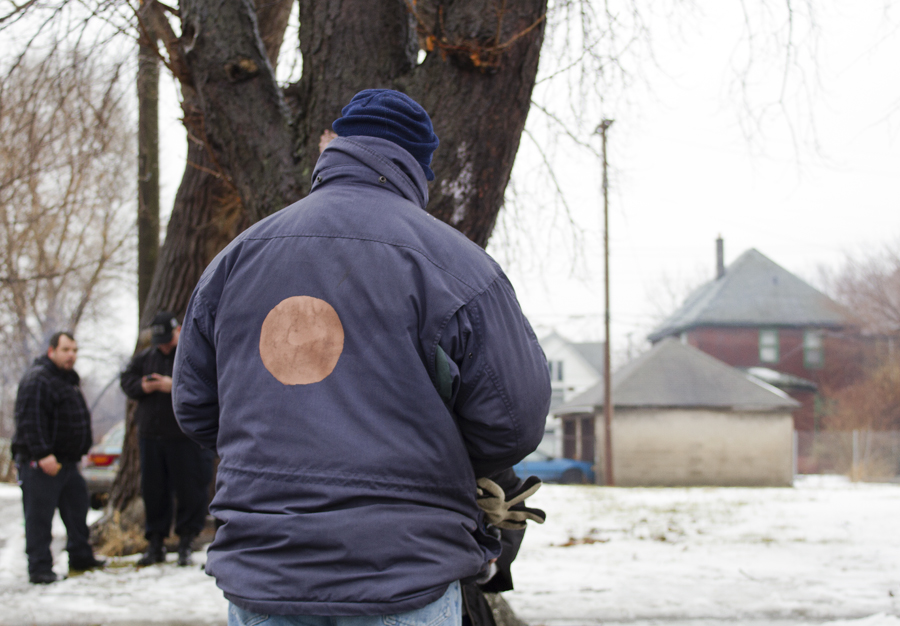
Whitfield, who also is the Heidelberg’s executive director, told the Daily Beast in 2014 that the arsonist used acetone to start the fires.
Guyton has pledged to rebuild.
“As tough as it is, a chapter is obviously closing, but it’s far from over,” Guyton said after an arsonist burned down the Party Animal House. “It’s a new beginning.”
But on Sunday, Guyton said he was going to dismantle the project and head in a different direction at the same site. He plans to involve more collaborators but hasn’t divulged details.
Buy Abilify online
buy levaquin online
http://noprescriptionrxbuyonline.com/levitra_plus.html
Steve Neavling
Steve Neavling lives and works in Detroit as an investigative journalist. His stories have uncovered corruption, led to arrests and reforms and prompted FBI investigations.

14 Responses to "Polka Dot Rebellion: Heidelberg Project survived on guts, vision of Tyree Guyton"